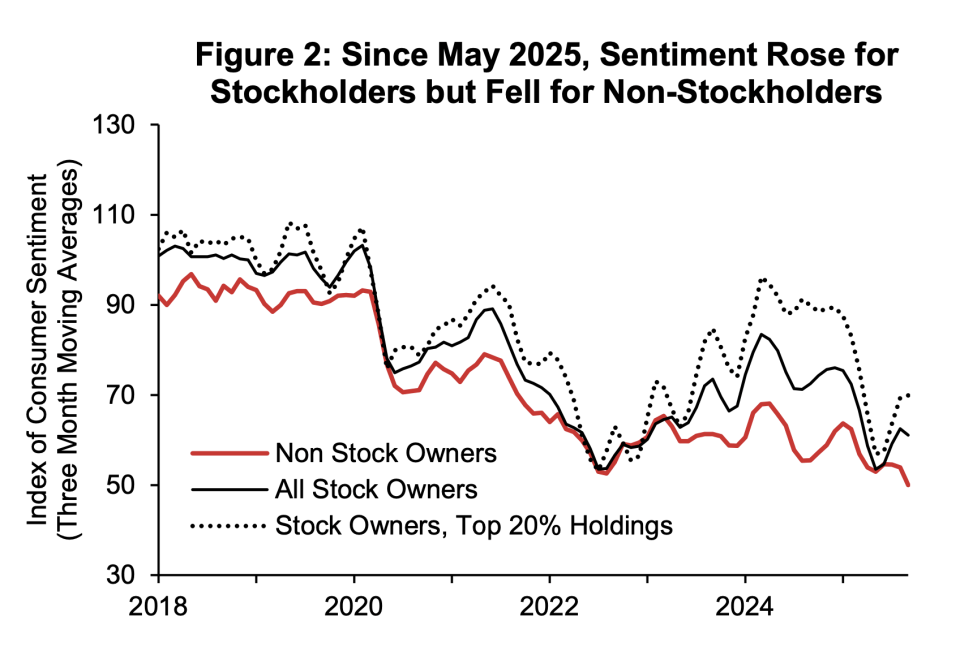The ongoing government shutdown has helped push confidence to near-record lows, but one segment of the population is actually feeling more optimistic.
The initial reading for the University of Michigan’s sentiment index fell to 50.3 in November from 53.6 last month, almost matching the all-time low of 50 from June 2022, when the annual rate of inflation hit its post-pandemic high.
“With the federal government shutdown dragging on for over a month, consumers are now expressing worries about potential negative consequences for the economy,” Joanne Hsu, the survey’s director, said in a statement Friday.
The decline was widespread and was seen across different age groups, income brackets, and political affiliations, she added.
But not everyone followed that trend.
“One key exception: consumers with the largest tercile of stock holdings posted a notable 11% increase in sentiment, supported by continued strength in stock markets,” Hsu said.
The survey closed before Tuesday’s elections, which revealed continued voter discontent about affordability as food and energy prices creep higher.
The timing is also notable given that it didn’t capture the most recent stock market selloff that sent the Nasdaq to its worst weekly loss since April’s trade war chaos.
That came as investors grew more concerned about the AI boom looking like a bubble that could pop soon. Until this past week, the stock market was on a hot streak, notching fresh record high after record high, with the S&P 500 even closing in on the 7,000 milestone.
Stocks fuel K-shaped confidence
The market’s impact on consumer sentiment comes as stock ownership has broadened over past five years into more income and age groups.
A separate University of Michigan report from last month said the increase in market participation has been especially large among lower-income consumers, while participation rates of younger and older consumers have caught up with middle-aged consumers.
In fact, a survey released last month from the BlackRock Foundation and Commonwealth showed that over 54% of Americans earning $30,000 to $79,999 a year are now retail investors in the capital markets. And more than half of that cohort began investing in the past five years.
Stock ownership has highlighted a divergence in consumer sentiment in recent months: investors are turning more upbeat while non-investors have turned more pessimistic, according to University of Michigan data from October. And participants with the top 20% of stock holdings are especially optimistic.

University of Michigan
The spilt even mirrors the K-shaped economy that has emerged as higher-income Americans continue to spend and prop up overall consumption, while others have pulled back.
Meanwhile, the so-called wealth effect of higher asset prices on consumer spending has become more potent in the last 15 years, making it harder to separate the stock market from the economy.
Today, a $1 increase in stock wealth leads to a $0.05 marginal propensity to consume, up from less than $0.02 in 2010, according to Oxford Economics.
The University of Michigan pointed out in October that sentiment among stock market participants had been on the rise since May—after tumbling in April when President Donald Trump shocked global markets with his “Liberation Day” tariffs.
By contrast, sentiment for non-stockholders continued to decline and had already hit post-pandemic lows.
“These patterns are consistent with the fact that strong asset values support consumer sentiment
only for those who own those assets,” the report said. “Meanwhile, given that wealthier, higher-income consumers generate a disproportionate share of aggregate spending, the recent uptick in sentiment among these households may may help buoy consumption spending even amid views of the economy that are relatively subdued from a historical perspective.”

